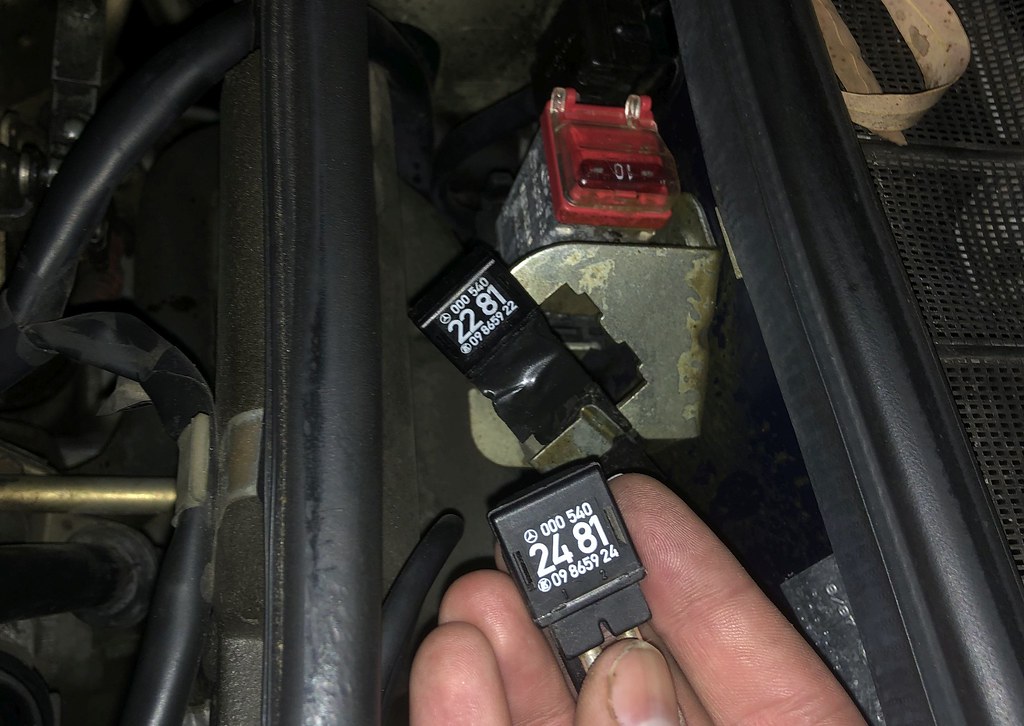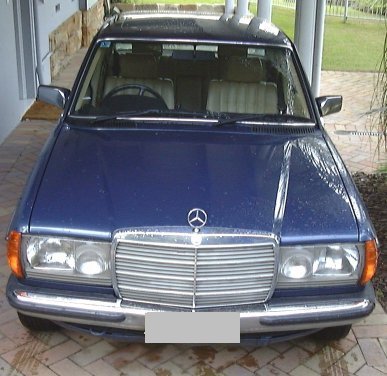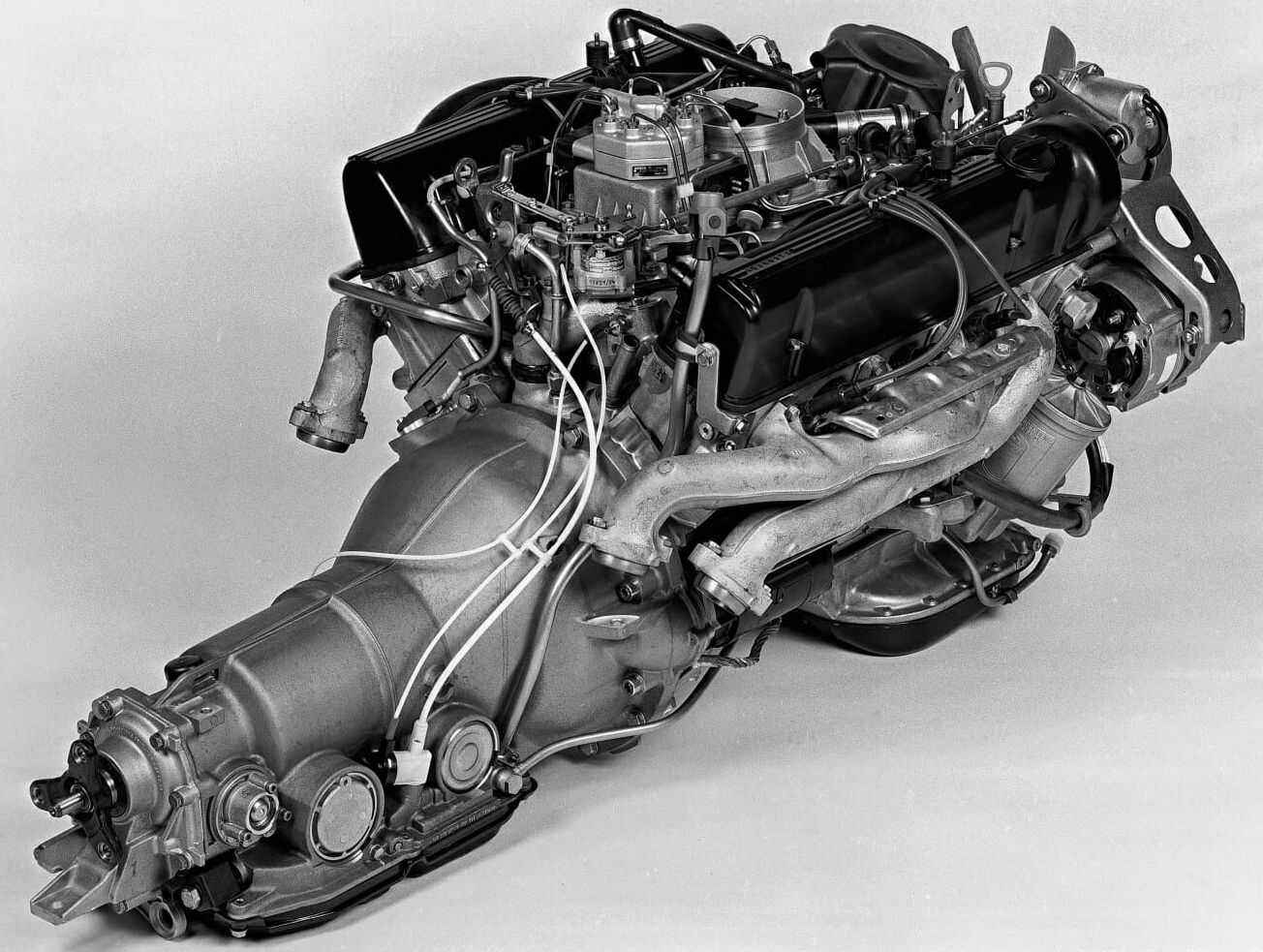The R16 resistor on the Australian W126
The second generation W126 controls ignition timing from the EZL. In most countries, Mercedes-Benz provided a knob to adjust the timing based on the petrol that was available in your area. This knob is present on my UK delivery 560SEC. I immediately turned the knob up to 98 octane petrol, as that is what I use in the car. In markets like Australia and the USA, they did not provide this knob. Instead, they provided a fixed resistor for that market. That allowed them to optimize for the petrol available in that market and focus emissions testing on that. That resistor is known as the R16 resistor, from the wiring diagram.
There are countless threads on the various Mercedes forums like BenzWorld and PeachParts about this resistor and various attempts at changing it. Most of these attempts are for the W124 and nearly all of them concern the USA version. This made me think about what this might mean for the Australian version. The Australian version has slightly more power than the USA version. However, it has no EGR, no smog pump, and a far less restrictive exhaust system. The other difference is that the USA version is set up for 95 Octane petrol and the Australian version for 91. For more details on all these differences, please see this article.
Its not possible to use 91 Octane petrol in a W126 in Australia anymore because it has been contaminated with Ethanol. Real petrol is only available in 95 and 98 Octane. That made me think it would probably make sense to optimise the 560SEL for 95 petrol since that is what I use. Based on that, I started my research. Most of this data comes from the 1987 technical data book. The values here are focused on the V8s, but the M103 is very similar. This was a project I did during the COVID19 lockdowns earlier this year.
The first thing was to map the values of the switch provided in most cars to the fixed resistance values found in Australian, USA and Japanese cars. In these tables, the S position corresponds to premium petrol and N regular petrol.
| Resistance | Market | ECE | KAT | RUF | Octane |
|---|---|---|---|---|---|
| Infinite | S | 1 | 98 | ||
| 2400 | 2 | 2 | |||
| 1300 | N | 3 | |||
| 750 | USA, J | 4 | S | 95 | |
| 470 | 5 | 5 | |||
| 220 | AUS | 6 | N | 91 | |
| 0 | 7 | 7 |
As these versions are all catalyst cars, we can see that the USA and Japanese versions correspond to the premium (95) position, and the Australian version to the regular (91) version. The ECE version is set up for 98 if on premium, which is what I use on my car.
From there, we can then look at what these settings actually do to ignition timing.
| Timing Degrees before TBC | Idle (without vacuum) | Idle | 3500 RPM (without vacuum) | 3500 RPM |
|---|---|---|---|---|
| RUF (S) | 8-12 | 10-18 | 26-30 | 41-45 |
| RUF (N) | 2-6 | 14-18 | 20-24 | 41-45 |
| KAT/CH (S) | 3-7 | 10-14 | 20-24 | 41-45 |
| KAT/CH (N) | (-3)-1 | 10-14 | 18-22 | 40-44 |
| ECE (1) | 8-12 | 14-18 | 22-26 | 41-45 |
| ECE (4) | 2-6 | 14-18 | 16-20 | 41-45 |
| AUS (220) | (-3)-1 | 10-14 | 18-22 | 40-44 |
| J (750) | 3-7 | 10-14 | 24-28 | 40-44 |
| USA (750) | 3-7 | 10-14 | 24-28 | 40-44 |
In the table above, we can see that the main difference is that the timing without vacuum is lower. I’m not really sure what impact this has in the real world. The other thing we see is that the same switch position can lead to different timing maps depending on the version of the car. To see what this meant, I cross referenced the EZL part numbers for these versions. These are the numbers for the M117.968.
| Market | Part number(s) |
|---|---|
| USA/AUS | 004 545 53 32 004 545 55 32 |
| RUF | 004 545 34 32 |
| KAT/CH | 004 545 34 32 |
| ECE | 004 545 00 32 |
The main outcome of this was that the USA and Australian versions seemed to use the same EZL. This meant that in theory, I should be able to replace my 220 Ohm R16 resistor for the 750 Ohm R16 resistor. I tried to buy one new, but like a lot of W126 parts, they are now NLA. In the end I found one on USA eBay to try.
| Part Number | Resistance |
|---|---|
| 000 540 22 81 | 220 Ohms |
| 000 540 23 81 | 470 Ohms |
| 000 540 24 81 | 750 Ohms |
| 000 540 25 81 | 1300 Ohms |
| 000 540 26 81 | 2400 Ohms |
 I drove the car around after the swap and I really couldn’t tell any difference. A better test would be to do a back to back run up a long freeway onramp to see if I felt any difference at higher rev ranges. By modern standards, a 560SEL is not a particularly powerful car. It is powerful enough that it is hard to use the higher rev ranges safely on most roads.
I drove the car around after the swap and I really couldn’t tell any difference. A better test would be to do a back to back run up a long freeway onramp to see if I felt any difference at higher rev ranges. By modern standards, a 560SEL is not a particularly powerful car. It is powerful enough that it is hard to use the higher rev ranges safely on most roads.
I’m not sure of the end outcome of this. Best case, I have optimized the car for 95 octane petrol. Worst case, I’ve not really made any difference.





























































1 Response
[…] Both R16 resistors […]